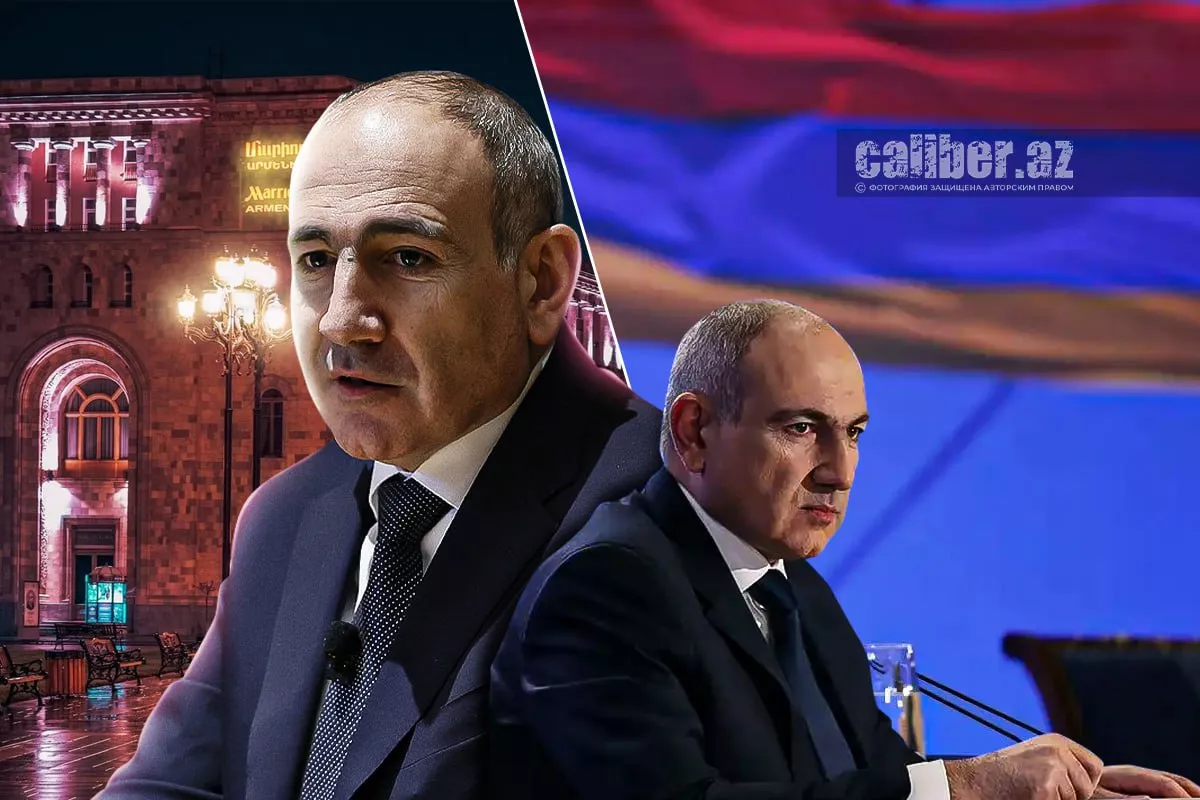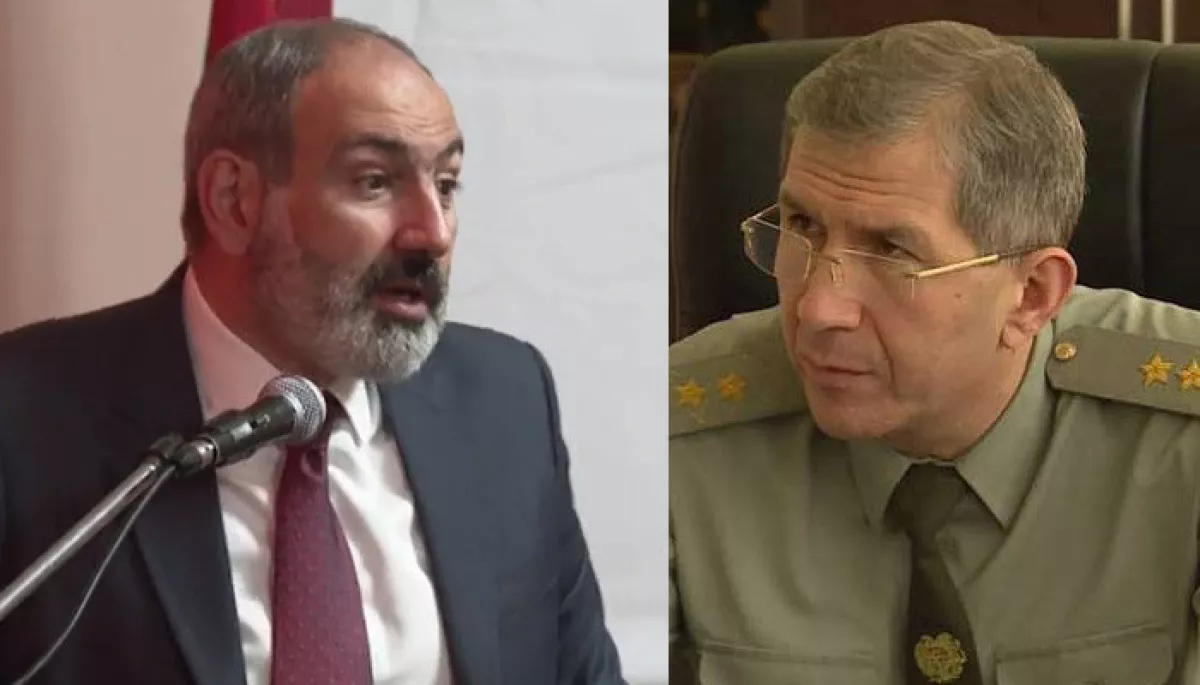Attempted coup in Armenia: Pashinyan acts preemptively Ellipsis, not full stop
The political crisis in Armenia, which began quite some time ago, has now reached its climax. Early today, information emerged about the foiling of an attempted coup in the country. Shortly thereafter, the Republic’s Investigative Committee issued a statement on the matter. It said, in particular, that participants and leaders of the movement called “Holy Struggle” had planned to carry out terrorist acts and actions aimed at seizing power in the Republic of Armenia.
“V.G. (Vazgen Galstanyan), having failed over several months to achieve the goal of legally seizing power in the Republic of Armenia through the movement he leads and founded, called 'Holy Struggle,’ decided in November 2024 to pursue this objective by unconstitutional means. In coordination with several members of the movement, acting as a group, he acquired the necessary resources and tools to carry out terrorist acts and forcibly seize power, deliberately creating conditions to prepare for a violent takeover,” the statement emphasises.
It also reveals that the coup plotters planned to form 200–250 strike teams, each comprising up to 25 individuals—mostly former military personnel and police officers with combat training. Each team was assigned a specific mission that must be executed at all costs, while participants were kept unaware of the tasks and actions of other groups, with no coordination between them.

The content of the Armenian Investigative Committee’s statement could be listed at length, but what has been presented so far is enough to understand how well-planned and serious the preparations for a power change in the neighbouring country were. Naturally, following the announcement of such explosive accusations, searches, detentions, and arrests of opponents of the current government are taking place throughout Armenia. A preliminary list of those detained as a result of today’s searches in the homes of opposition figures has already appeared.
Alongside Archbishop Bagrat Galstanyan, there are seven others on the list. These include David Galstyan, a representative of the remnants of separatists; retired Colonel Mihran Makhsudyan; member of the Supreme Body of the ARFD, Igor Sargsyan; businessman Tigran Galstyan; activist Ara Rostomyan. Among the detainees are also deacons Hrayr and Movses. According to local media reports, the Armenian National Security Service (NSS) also raided the home of “Karabakh Parliament Speaker” Ashot Danielyan. It is also reported that ParaTV director Elizabeth Petrosyan was taken to the investigative department of Erebuni, where NSS officers conducted searches in her home.
And at present, there is only one, but very pressing question on the agenda: “Will Robert Kocharyan, Serzh Sargsyan, and the Catholicos of All Armenians, Garegin II — whom Prime Minister Pashinyan refers to by his secular name, Ktrich Nersisyan — also be arrested and brought to criminal responsibility?”
In Armenia’s recent history, there have been multiple events that can be interpreted as attempts at violent power change or threats to the constitutional order, ranging in severity from conspiracy suspicions to open armed uprisings. For example, on October 27, 1999, a group of armed men led by Nairi Hunanyan stormed the Armenian parliament building and shot Prime Minister Vazgen Sargsyan, Speaker Karen Demirchyan, and six other politicians.

Officially, it was stated that the organisers of the terrorist attack acted independently. However, theories still persist linking the assault to a power struggle among the elite, particularly between pro-Western and pro-Russian factions. The event ultimately strengthened the position of then-President Robert Kocharyan, whom many in Armenia regard as the behind-the-scenes orchestrator of the parliament attack. According to various publications in the Armenian press over the years, he acted in the interests of his Russian patrons.
On July 17, 2016, a group of armed opposition members from the terrorist movement “Sasna Tsrer” seized the territory of the Patrol Police Regiment in the Erebuni district of Yerevan and held hostages there for several days. They demanded the release of militant Jirair Sefilian and the resignation of then-President Serzh Sargsyan. Formally, the action was carried out by radical members of the Armenian diaspora and opposition activists. The authorities called it an attempted coup d’état. Jirair Sefilian himself denied any involvement in organising the armed uprising.
On July 31, facing the threat of an assault on the building, the opposition members surrendered. Subsequently, the attackers were sentenced to long prison terms. Jirair Sefilian was also convicted but was later amnestied after Nikol Pashinyan came to power. These events seriously undermined the authority of Serzh Sargsyan’s regime and contributed to the rise of protest sentiments in the country, which eventually led to the “Velvet Revolution” of 2018.

Another notable example from this series occurred in February 2021, when Prime Minister Nikol Pashinyan accused senior military officials of attempting a coup. The immediate trigger was a statement by the Armenian Armed Forces General Staff, which called for the prime minister’s resignation amid widespread dissatisfaction with the outcome of the Second Karabakh War. Although no official evidence of a coup attempt was ever confirmed, Pashinyan condemned it as a military rebellion orchestrated by remnants of the previous regime. No arrests were made, but Pashinyan dismissed the Chief of the General Staff, Onik Gasparyan. This action sparked mass opposition protests but ultimately did not result in a change of power. The crisis was resolved in summer 2021 through early parliamentary elections, where Pashinyan’s party secured another majority. Nonetheless, the episode further deepened mistrust between the civilian government and the military.
Given this background, it is unsurprising that the recent statement from the Armenian Investigative Committee highlights the involvement of former military personnel in the latest attempted coup.
Open or covert attempts at coups in Armenia have invariably impacted the political atmosphere. Each of these events has revealed a conflict between the old elite and new forces, between civil society and the military establishment. Today’s situation differs primarily in the involvement of the Armenian Church—and possibly external actors—in this conflict. However, it is already clear that it is too early to put a full stop to the confrontation between the current Armenian government and its opponents. Here, an ellipsis is more appropriate.








